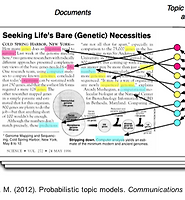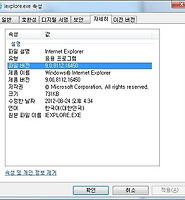| 일 | 월 | 화 | 수 | 목 | 금 | 토 |
|---|---|---|---|---|---|---|
| 1 | 2 | 3 | 4 | |||
| 5 | 6 | 7 | 8 | 9 | 10 | 11 |
| 12 | 13 | 14 | 15 | 16 | 17 | 18 |
| 19 | 20 | 21 | 22 | 23 | 24 | 25 |
| 26 | 27 | 28 | 29 | 30 | 31 |
- x64
- error fix
- NumPy Unicode Error
- h5py.File
- Injection
- open office xml
- why error
- malware
- ecma
- MySQL
- idb2pat
- 포인터 매핑
- svn update
- ida
- debugging
- javascript
- pytest
- ida pro
- error
- mock.patch
- Python
- idapro
- Ransomware
- hex-rays
- idapython
- Analysis
- Rat
- TensorFlow
- commandline
- data distribution
- Today
- Total
13 Security Lab
[Recommend System] matrix factorization 으로 구현하기 본문
[Recommend System] matrix factorization 으로 구현하기
Maj0r Tom 2018. 5. 17. 23:09Recommend System?
Recommend System is a subclass of information filtering system that seeks to predict the "rating" or "preference" that a user would give to an item.
1. Simple Recommend System Tutorial
Recommend System 을 위한 간단한 행렬식에 matrix factorization + regularization 적용
추천시스템을 Matrix completion problem 으로 보고 접근한다.
User-Movie Recommend System을 예로 들 수 있다.
The mathematics of matrix factorization
평점이 채워진 행렬을 R이라 할 때, User행렬 P와 Movie행렬 Q의 Matrix 는
로 표현 됨.
(R: 비어있는 곳이 없는 원래 데이터,
: 비어있는 곳을 복구한 데이터)
Matrix의 원소
는 아래와 같이 나타낼 수 있다.
오차를 최소로 줄이기 위해 Gradient Descent를 적용하고 그를 위해서 error e에 대해서 정리하면,
최소점을 알기 위해 p, q에 대해서 미분한다.
따라서 아래와 같이 식을 얻을 수 있다.
Regularization
Regularization를 하는 이유는 Overfitting을 방지하기 위해서 이다.
는 user, movie feature의 magnitude를 조절하기 위한 상수
Data table:




1. yoochoose-clicks.dat - Click events. Each record/line in the file has the following fields:1. Session ID – the id of the session. In one session there are one or many clicks.2. Timestamp – the time when the click occurred.3. Item ID – the unique identifier of the item.4. Category – the category of the item.2. yoochoose-buys.dat - Buy events. Each record/line in the file has the following fields:1. Session ID - the id of the session. In one session there are one or many buying events.2. Timestamp - the time when the buy occurred.3. Item ID – the unique identifier of item.4. Price – the price of the item.5. Quantity – how many of this item were bought.











- https://github.com/sharpduckk/BigData_Statistics/tree/master/RecommendSystem
- http://www.quuxlabs.com/blog/2010/09/matrix-factorization-a-simple-tutorial-and-implementation-in-python/
- https://getstream.io/blog/factorization-recommendation-systems/
- Factorization Machines, Steffen Rendle
https://www.csie.ntu.edu.tw/~b97053/paper/Rendle2010FM.pdf - http://www.jefkine.com/recsys/2017/03/27/factorization-machines/
- Factorization machine을 이용한 추천시스템 설계, 정승윤
http://www.riss.kr/link?id=T14550028



















